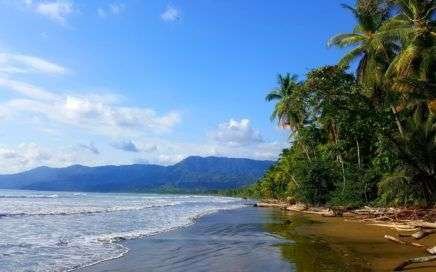
The Poisonous Granular Frog
AUTHOR: Josue Alberto Vargas Montoya (14 years of age)
The spectacular family of poisonous frogs (Dendrobatidae) surprises with its beautiful and colorful and lethal frogs. In Costa Rica, we have eight species of poisonous frogs. Those of the genus "Silverstoneia" and "Allobates" are not harmful.
The genus "Oophaga" is famous for its "pants," and the only two species of Oophaga of Costa Rica (O. Pumilio and O. Granulifera) are those that present pants.
The Granular Poisonous Frog (Oophaga Granulifera) is endemic to the Central Pacific and southern Costa Rica and part of Panama. It can be located near gorges in the woods.
In Costa Ballena, you can find the Red morpho with its green pants and his back "Granular," hence its name.
no images were found
After Hacienda Barú towards the Central Pacific, its main red color changes to Orange for the Matapalo sector, yellow in Portalón, and finally an olive green in San Rafael, Quepos always with its green and sometimes light blue pants.
These frogs are in danger due to the loss of their habitat. It is also exploited by smugglers to sell them as Terrarium pets.
Its venom is neurotoxic and very dangerous. It is not recommended to manipulate animals in freedom, especially the beautiful multicolored frogs.
The dangerous thing would be for the poison to reach a wound, or you would suck it.
Indigenous peoples used the poison of these frogs for hunting, smearing the poison on their arrows. That is why some of them are called "arrowhead frogs or dart frogs" in general (phyllobates).
Granular poisonous frogs are well distributed in Costa Ballena. It is a great attraction for tourists and so of interest for tour guides. Costa Ballena is one of the main places to see the Red Morpho, one of the granular venomous frogs.
They are diurnal, and males are heard singing to attract females to reproduce. The female lays her eggs in leaf ponds in the forest. As the hours pass, the eggs become tadpoles waiting for their father to place them in a bromeliad where they will be safe.
The mother feeds them with infertile eggs until they grow and can find food on their own.
Nights in Ojochal are Full of Life!
Yes, Costa Rica is known for its abundant biodiversity, but not many neighbors of Ojochal would imagine that they could share their garden with a wild cat, which could be a jaguar or a puma. In the past, many testimonies of neighbors, along with animal footprints, showed the presence of Ocelots in Ojochal and even larger cats, such as the puma or the panther.
Local Matters
Local publications and media play a key role in communities by helping us to see and care about things we may have missed or not paid much attention to. No mass media is going to take the time to report on a local incident, social event, business opening or fundraiser and, if they do arrive for a story, they won’t have the background or time to understand the people involved and how it truly impacts the community.
Language of Dance: Language of Being
“Life is movement, in every movement poetry can inhabit, that is, in the body, there is always the possibility of poetry, art, and dance.” The body is the first reference of the being and the […]
Avocado Day – July 31st
Considered a Super Food there are many reasons to celebrate the National Avocado Day. One of the secret weapons in an avocado is the high oleic acid content. This moisturizing fatty acid helps keep skin soft and hydrated but also supports the regeneration of damaged skin cells reducing redness and irritation.

Ceviche Made of Shark?
Don´t eat ceviche of shark. Without sharks, there will be no healthy fish or oceans for future generations.

Stay Safe on the Costa Ballena, Costa Rica
Learn how to stay safe on the beaches of Costa Ballena. Find out what tips there are for not getting robbed on the beach.
What to do, Where to eat and Where to stay…
- Activities and Tours
- Whale Watching Tour
- Natural Attractions
- Marino Ballena National Park
- Restaurants
- Hotels and Accommodations
Looking for business directories, maps or other printouts? We’ve got that too!
- Tide Charts
- Bus Schedules
- Dominical Business Directory
- Uvita Business Directory
- Costa Ballena Map
- Dominical map
- Uvita map
- Ojochal map
South Pacific Costa Rica Beaches
Dare to Discover and Enjoy…
Check out…
Need help planning your next trip? Let us help you with your Costa Rica vacations!
Email: carlos@ballenatales.com
Phone: +(506) 8946 7134 or +(506) 8914 1568
